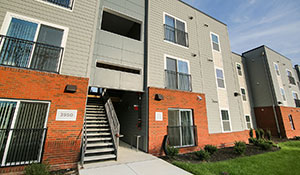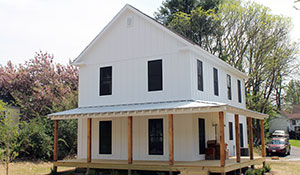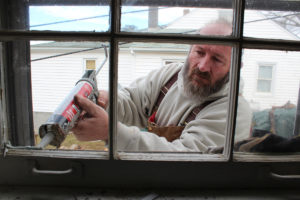October 24, 2016
As of Oct. 30, Community Housing Partners (CHP) has performed 25,000 weatherization jobs in the state of Virginia since it began delivering weatherization services in 1976. Oct. 30 was also National Weatherization Day and the fortieth anniversary of the Weatherization Assistance Program (WAP).
“CHP has been an official weatherization provider since the beginning of WAP and we remain committed to promoting healthier, safer, more energy efficient built environments by providing energy audits, inspections, and energy performance upgrades across the commonwealth,” said CHP Vice President of Energy Solutions Bill Beachy.
Weatherization Day is an annual effort to focus local, state, and national attention on the WAP and the work performed by program providers such as CHP. The mission of the program is to increase the energy efficiency of dwellings occupied by low-income Americans, thereby reducing their energy costs, while safeguarding their health and safety. Among low-income households, the program prioritizes those with elderly residents, individuals with disabilities and families with children.
In the 40 years since CHP began work as a weatherization provider, industry techniques and equipment have evolved considerably. From simple low-cost/no-cost measures such as caulking, plastic on windows, and door weather-stripping, CHP’s services have emerged as a sophisticated diagnostic process utilizing the most recent building science techniques and proven best practice applications that maximize energy and dollar savings. All of CHP’s weatherization measures are guided by a computerized energy audit procedure that uses data and other analyses to determine the most energy efficient and cost-effective whole-house approach. The success of this approach can be measured by the fact that, on average, weatherized homes reduce their energy burden by 25 percent.
Work performed by CHP under the WAP program has also had a positive impact on health. Lives are saved and health costs reduced due to CHP’s carbon monoxide testing, mold and moisture remediation, lead paint identification, and indoor air quality testing. CHP also reduces emissions of carbon and other air pollution sources by almost three metric tons per year per home, and over the life of the measures, saves over 50 metric tons of carbon emissions per home. Reducing carbon and air pollution have a direct connection to improving the quality of our air, land, and water, and thus a direct improvement to resident health.
In Virginia, the WAP is administered by the Virginia Department of Housing and Community Development (DHCD). DHCD contracts weatherization services to 19 non-profit agencies around the state, including CHP. Primary funding for the program is a combination of U.S. Department of Energy funds, Low-income Home Energy Assistance Program (LIHEAP) funds, and some funding from Virginia utility companies.
“Through the WAP, CHP continues to provide dozens of living wage jobs, support of local businesses and economies, reduced air pollution and carbon emissions, safer and more affordable housing stock, and a state network of more energy efficient homes,” commented Beachy. “It’s a very cost-effective and successful program.”



